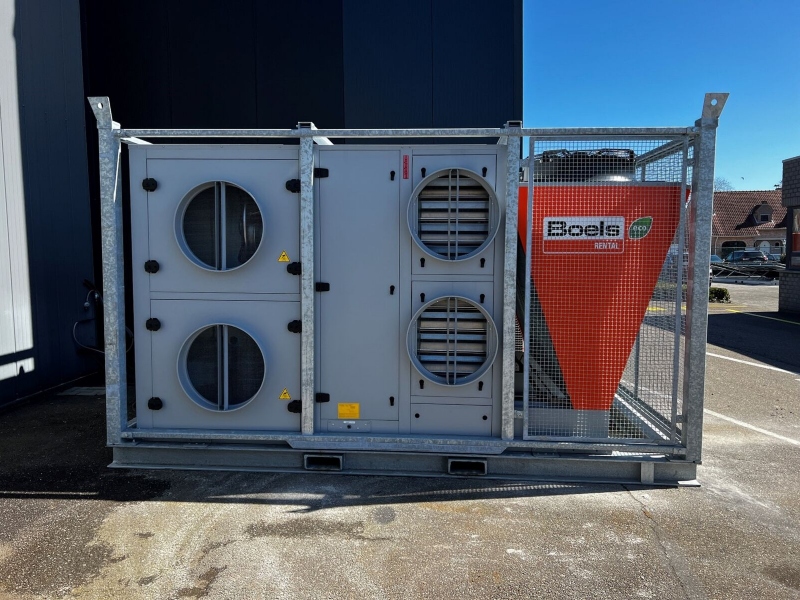We are hearing more and more talk of mould growth in buildings under construction. This is an unfortunate development, as mould can make people seriously ill and lead to high costs in the event of actual damage to the building. The dampness that occurs during and due to construction is the primary cause. With autumn and winter approaching, we would like to share a few tips on how to ensure your construction site stays dry.
Mould is very harmful to human health, and as a contractor or installer, that includes your own. Making every effort to prevent mould from growing in the first place is key. But if mould has formed anyway, it is important to get rid of it as soon and as effectively as possible. To that end, it is essential to know how mould forms.
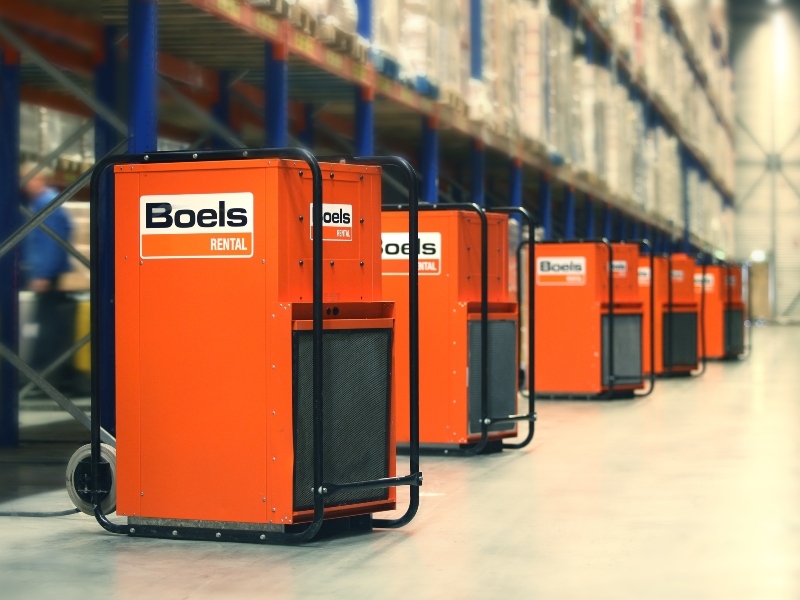
Keep out precipitation as much as possible
Mould thrives on high levels of moisture, and there is plenty of that around. According to the Royal Netherlands Meteorological Institute (KNMI), half of the days in a year can see damp conditions. Since construction sites are frequently left exposed longer than they are sealed, even in the autumn and winter, they can take in a lot of precipitation. This causes the floors, walls and even ceilings to become wet, giving mould spores the opportunity to accumulate. However, this is often discovered too late, potentially leading to major damage and costly repairs. And no one wants that, of course. So it is important to protect construction sites from wet weather as much as possible.
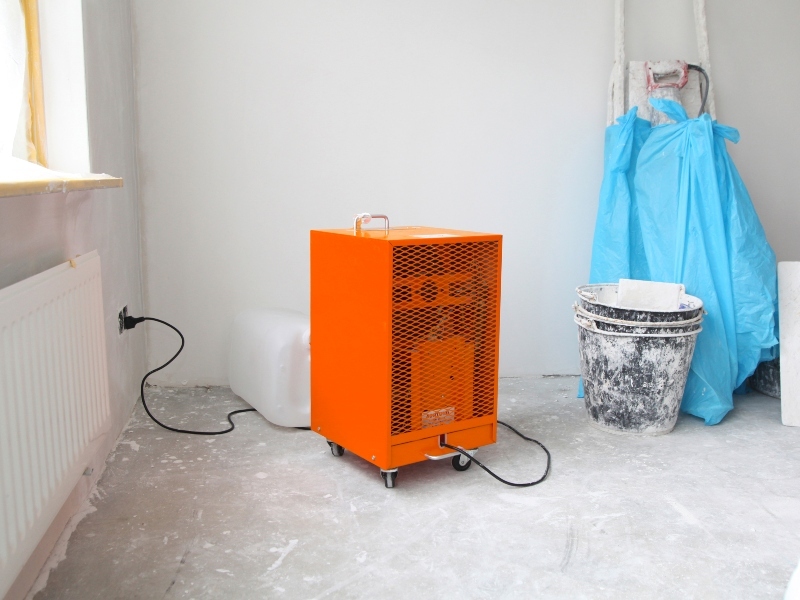
Moisture production during construction
Protecting the construction site from external moisture is not always enough, as a lot of moisture can also be produced by the construction process itself. This can be a huge problem, especially in winter, particularly when construction sites are unheated. Once the glazing and roofing are in place, the finishing work inside can begin. This often means applying plaster, screed floors or similar materials. All of these activities involve a high moisture content, a breeding ground for mould. Furthermore, because of the frequent rainy days during the rest of the year, moisture can also be introduced inside through building materials that have been stored outside. The same applies here: prevention is better (and cheaper) than cure.
How to prevent mould from forming
It’s actually quite simple: through consistent heating and regular ventilation.
In short: Prevent mould by keeping construction sites warm and dry
In short: Prevent mould by keeping the construction sites warm and dry. That means providing as much protective cover as possible, which in turn means being proficient with covering materials yourself, from tarpaulins and temporary roof structures to drainage systems. There are also several rental solutions for heating and ventilation at Boels.
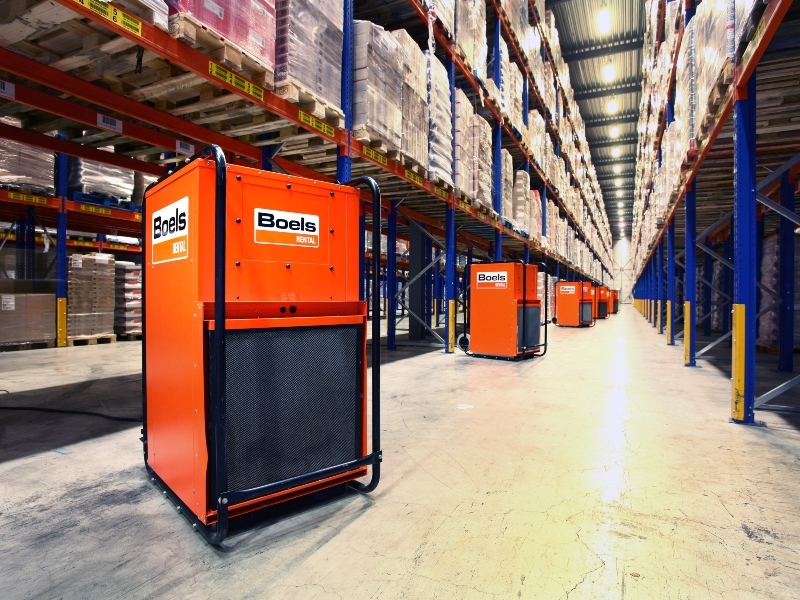
Hiring the right building dryer
You can prevent mould growth in damp rooms with the help of the right building dryer. When it comes to building dryers, you have a choice between adsorption dryers and condensation dryers. They are also called dehumidifiers since they convert humid air into dry air. In this example scenario, we have opted for a condensation dryer as it speeds up the drying process. This is exactly what we need in order to prevent building damage due to rot and mould. Depending on their drying capacity, these dryers are suitable for jobs in both small and large spaces. This includes work on sand cement and anhydrite floors, plastering and spraying work, painting, suspended ceilings and tiling.
Most compact condensation dryers weigh 30 kg and have a capacity of 12 litres per 24 hours, which is enough for a room of up to about 160 cubic metres. A normal 230 volt connection is sufficient here. After that, you have versions with 50, 75, 80 and 150 litres per 24 hours. The largest condensation dryers that Boels hires out have a capacity of as much as 450 litres per 24 hours. Those weigh 130 kg and therefore need to be moved by a forklift or crane. They also require a 400 volt connection.
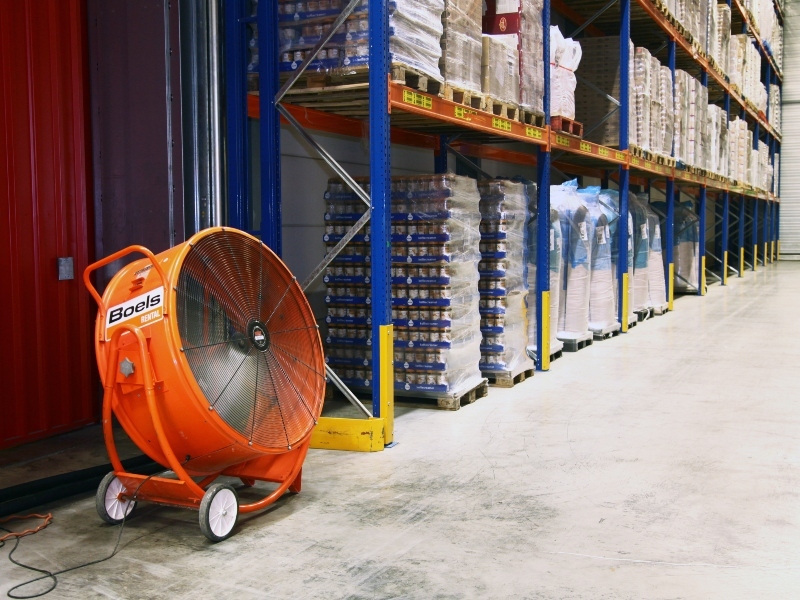
Wide range of fans and extractors
Boels also has a wide range of rental fans and extractors available. The range starts with a 15 kg radial fan for drying floors with a capacity of 5100 cubic metres per hour. Portable industrial fans are well suited for drying buildings, with capacities of 200/3000/4500 cubic metres per hour, as well as a 12,500 cubic metre per hour version for larger spaces. Radial fans with huge capacities (35,000 and 45,000 cubic metres per hour) in conjunction with an air hose are also available for moving air over greater distances from large spaces such as tunnels, commercial premises, sheds, garages and, of course, construction sites.

